Five things to look our for (including a Roglič win) at the Critérium du Dauphiné 2022
With the Tour de France on the horizon Jumbo-Visma, Ineos Grenadiers and others are set to do battle at the 74th edition of the week-long stage race
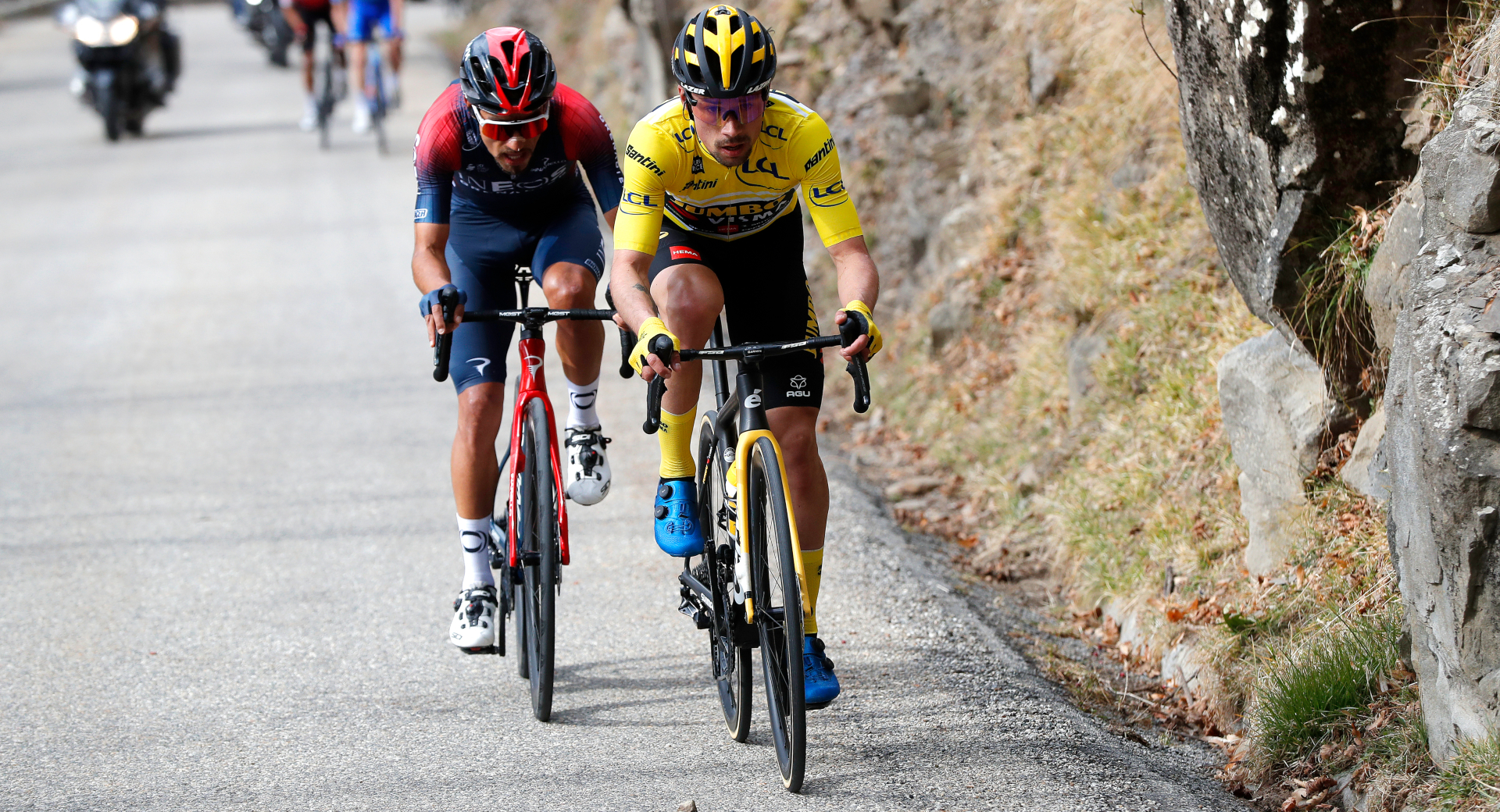
With the Giro d’Italia in the rear view mirror, attention now turns to the Tour de France. As ever, June is full of warm ups for the grande boucle, and perhaps none more so than the Critérium du Dauphiné. First run in 1947, it’s always been viewed through the prism of le tour.
As a dress rehearsal for the biggest three weeks of the year riders and their teams are judged here perhaps less on what they do in the race as opposed to what it may suggest come July. It’s easy to see why. The Dauphiné is a condensed Tour of sorts. It features eight stages, including a time trial and a few excursions into the mountains. One of these usually replicates a tour stage that we’ll see the following month, at least in part.
It’s a good testing ground for sure, but it's not always a crystal ball when it comes to predicting Tour de France winners. While this century Lance Armstrong (depending on how your feel about asterisks), Bradley Wiggins, Chris Froome (on three occasions) and Geraint Thomas have all done the Dauphiné-Tour double, the last three editions have seen Richie Porte, Dani Martinez and Jakob Fuglsang crowned winners, with Tadej Pogačar (UAE Team Emirates) and Primož Roglič (Jumbo-Visma) both staying away from the race in 2021.
This year Roglič is back, and his participation is just one of the things to look out for in the 74th edition of the Critérium du Dauphiné.
Roglič returns...and probably wins
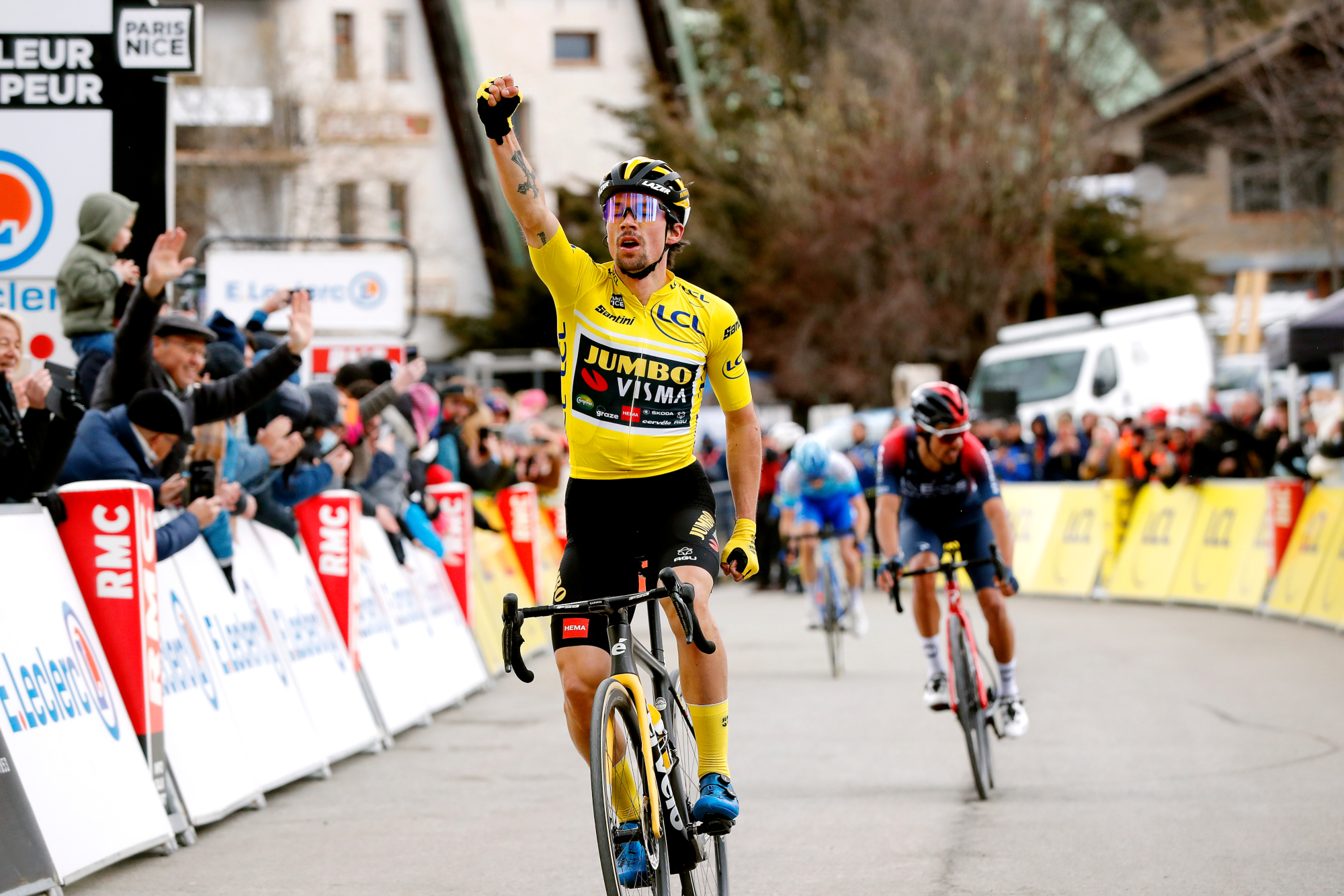
It’s not unusual for Primož Roglič to race a light schedule ahead of his primary objectives. Last year he warmed up for the Tour de France by undertaking a number of training camps away from prying eyes, with Liège–Bastogne–Liège, in April, his last slice of competitive action before the Grand Depart.
While it might not be possible to truly hide in this digital age, he’s again been doing a good job of lying low. He last suited up at the Itzulia Basque Country stage race in April, which followed his win at Paris-Nice. Fortunately for race fans, he’s decided to include the Dauphiné in his schedule again and it will be interesting to see just how good his legs are. However, history tells us that Roglič is usually in great shape regardless of when he last raced. While bad luck hasn’t escaped him, his consistency is pretty remarkable. Along with his resilience, it’s at the root of his greatness. Anyone who wants to win this week will need to finish ahead of Roglič.
There’s some unfinished business here of course. In 2020 he led the race going into stage four before crashing heavily on the road to Megève. He abandoned the following day and a month later wound up second to Pogačar in the Tour de France.
Get The Leadout Newsletter
The latest race content, interviews, features, reviews and expert buying guides, direct to your inbox!
He’ll clearly be hoping for a different pattern of events this year. The parcours certainly looks to suit him once again. The three opening stages are all decidedly lumpy while stage five to Chaintré has a spiky profile with plenty of short but steep climbs that look well matched to his punchy climbing style. In between these there’s a pan flat 31.9km TT. This will be right up Filippo Ganna ’s (Ineos Grenadiers) alley but could also allow Roglič, who’s normally strong against the clock, to gain a few seconds on his GC rivals ahead of the race’s longest stage the following day.
The final two Alpine stages should provide the best indication of how Roglič is looking ahead of his expected showdown at le tour with Pogačar. The latter was imperious in the mountains on his way to winning his second Tour de France title. While Roglič had already crashed out before the mountains proper in that edition of the race, it seems a given that if he wants to stop his fellow Slovenian from achieving a hat-trick of wins he’ll need to be able to at least go toe-to-toe with him in the Alps and the Pyrenees. His form this week should give us some insight to just how likely that might be.
All aboard the Jumbo-Visma train
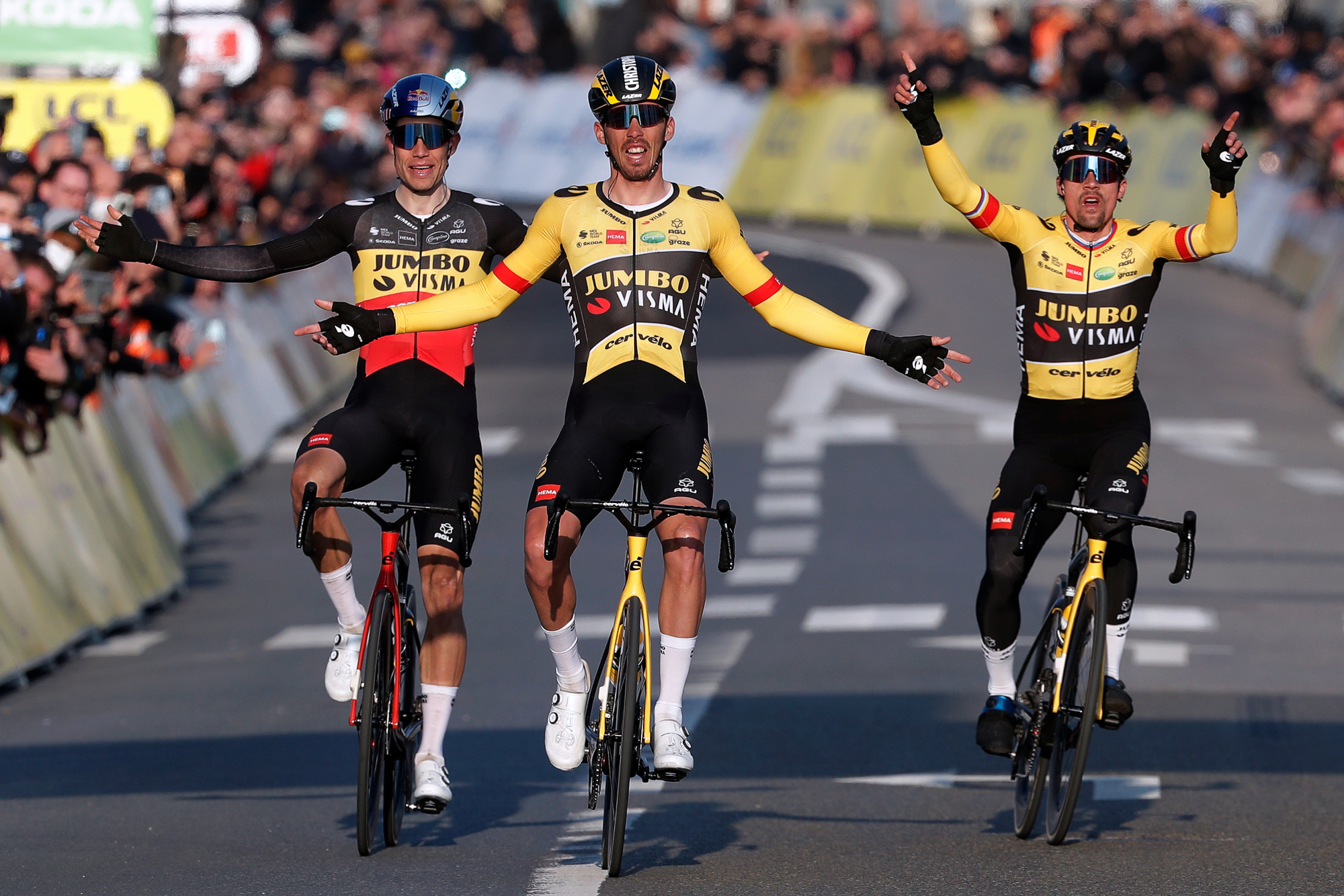
From the strength of its roster at this year's Dauphiné it’s clear that Jumbo-Visma means business. While Roglič will still require the legs to complete the job, he won’t be short of support in his race for the GC title.
He’ll be joined by the likes of Jonas Vingegaard, Wout van Aert, Christophe Laporte, Tiesj Benoot and Steven Kruijswijk. It’s a formidable line-up, resembling the team’s Paris-Nice squad that helped Roglič to the GC win and included the dominating spectacle of that Laporte-Roglič-Van Aert top-3 finish on stage one.
It’s also one ideally suited to handling the rigours of a stage race such as this. Vingegard, Van Aert and Kruijswijk have proved their worth as mountain domestiques of the highest order many times over. Vingegaard, the runner up in last year’s Tour de France, also allows Jumbo-Visma to approach the Dauphiné GC with a two-pronged attack. Should Roglič crash out, as in 2020, then they have a ready-made replacement. Laporte is coming off an impressive spring campaign, following up the stage win in Paris-Nice with two runner up finishes in the E3 Saxo Bank Classic and Gent-Wevelgem one-day races. He appears to have raised his game since joining the Dutch outfit and his skill set seems a good fit for the early hilly stages, whether it's looking after Roglič or hunting for a stage win. However he hasn’t raced since Paris-Roubaix where he was a DNF.
The time trial should present an opportunity for some individual glory too, with Van Aert likely to challenge Ganna on the route from Montbrison – La Bâtie d'Urfé. But it’s in the mountains during the last two stages where we should get to see the team really flex its muscles ahead of the Tour de France. A dominant Jumbo train that sets an unrelenting tempo up the climbs would send quite the message to Pogačar and his UAE Team Emirates ahead of July.
Back-to-back summit finishes should ignite the GC race
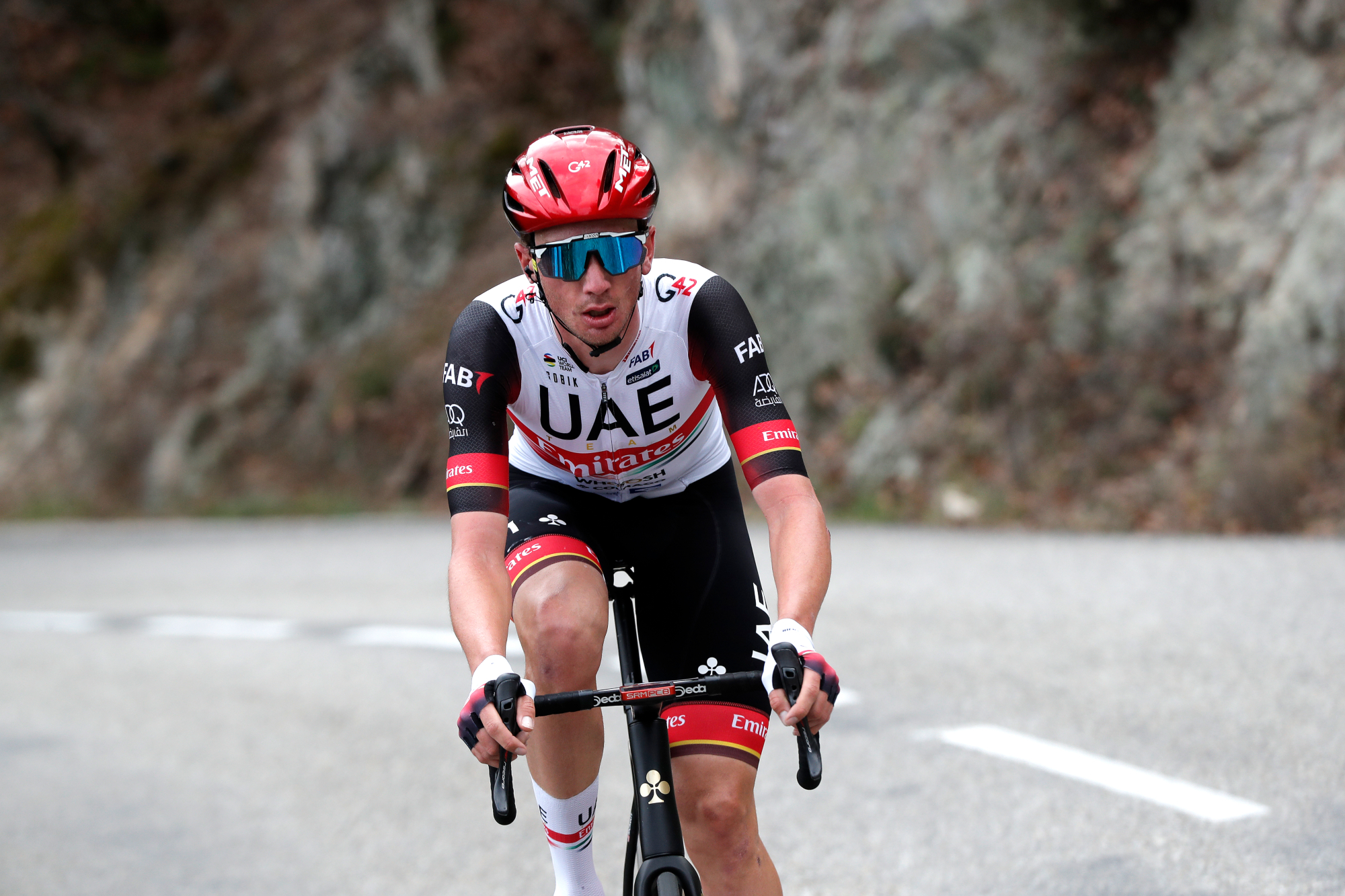
This year’s Giro d’Italia was evidence of how a lack of mountain top finishes can nullify a GC race. Fortunately the Dauphiné features consecutive summit finishes on stage seven and eight. It should make for exciting racing, and if time gaps are still small, provide ample opportunity for the GC contenders to try and create some separation.
Stage seven partially resembles stage 12 of this year’s Tour de France, taking in the familiar but still spectacular climbs of the Col du Galibier and Col de la Croix de Fer. At over 2,600 metres the Galibier marks the high point of the race. In July the riders will also tackle Alpe d’Huez but here they head instead for the category two climb to Vaujany. It’s short and steep, with 10% gradients early on. It seems to have Roglič’s name written all over it.
The final day sees the riders take on a series of climbs including the category 1 Col de la Colombière before heading to the summit finish of the hors category Plateau de Solaison. At over 11km long with an average gradient of over 9% it's the proverbial sting in the tale and could be the stage for a memorable GC battle.
While Jumbo-Visma will hope to control the race in the mountains, there are other teams too who will be targeting these stages as part of their GC challenge. UAE Team Emirates have both Brandon McNulty and teenage sensation Juan Ayuso as their likely leaders, with support in the mountains coming in the form of Rafal Majka and George Bennett. Meanwhile Bahrain-Victorious, hot off winning the best team classification at the Giro, bring Damiano Curuso as its designated leader, aided by Dylan Teuns, Jack Haig and Luis León Sánchez.
Movistar will hope that a well rested Enric Mas, who finished 11th here in 2021, will be able to compete for the GC, while Astana Qazaqstan's Miguel Ángel López poses a genuine threat if he's been able to fully overcome the hip injury that saw him leave the Giro during the first week. On his day, he's one of best climbers in the peloton, but it will likely be his temperament rather than his form that will decide whether we get to see Superman or Clark Kent this week.
Will Ineos’ dominance at the race continue?
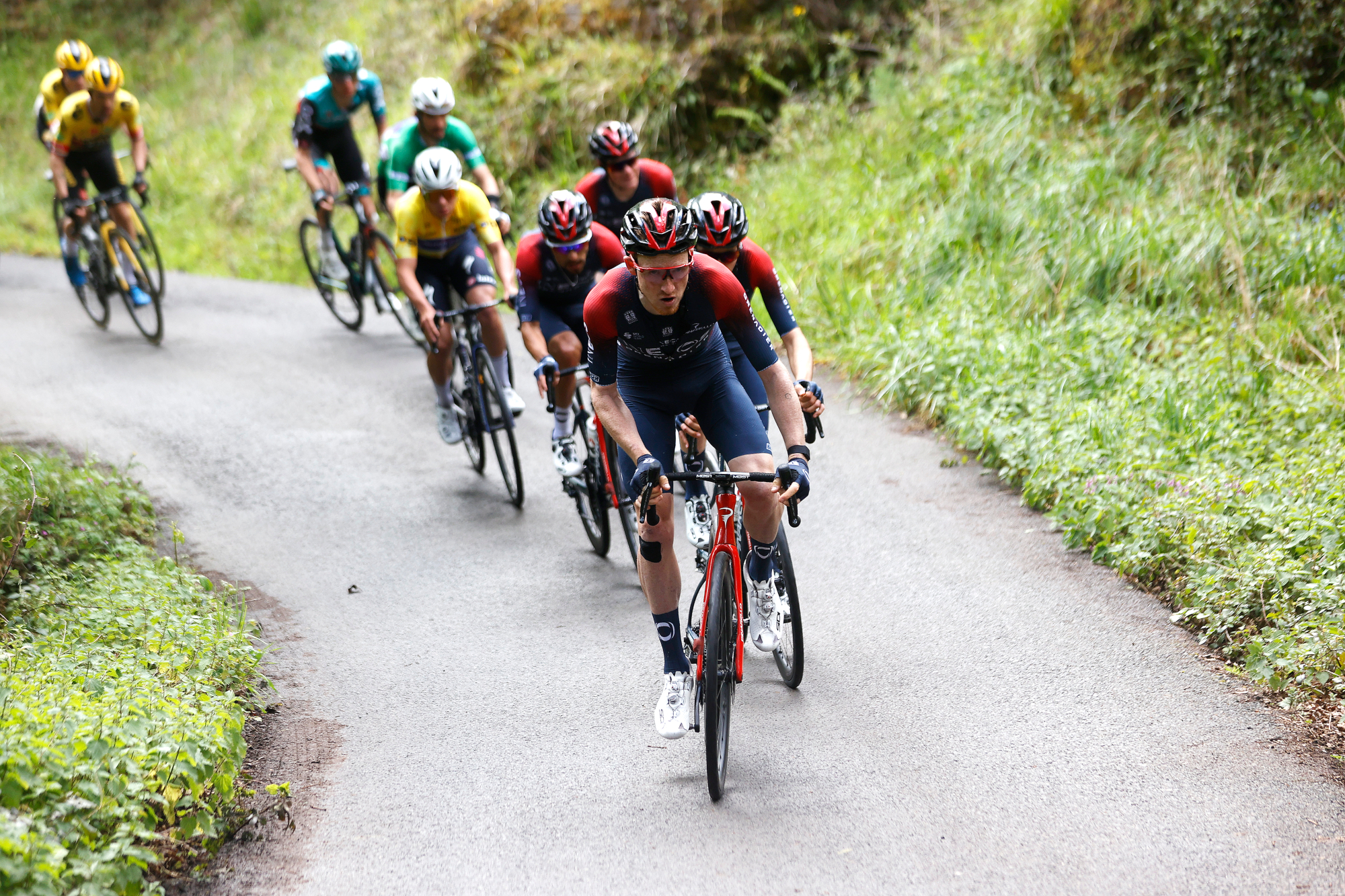
The British team have dominated the Dauphine in recent years. Seven of the last 11 winners have done so wearing either the Ineos or Sky livery. Given their singular focus on the Grand Tours, it was little surprise that the Dauphine was the place where the Sky train came to warm its engine before moving on to the next, more important, station.
But recently the race hasn’t been the springboard for tour success as it was for Wiggins, Froome and Geriant Thomas. Instead it’s been an opportunity for their super domestiques to become stars rather than watercarriers for a week; Dani Martinez won in 2020 with Richie Porte following suit in last year’s race. If it’s a reward of sorts for their tireless effort in the service of others, it was also surely a tactical move ahead of the Tour de France. No longer built around a single team leader, Ineos now plays the numbers game. And what better way to demonstrate this than an early show of force by some of your less heralded GC men.
If they are to make it three wins in a row, they’ll need Tao Geoghegan Hart to find the form that won him the Giro in 2020. Seemingly like many in the peloton, he’s been beset by injury and illness over the past months. However, his performance in the recent Tour of Norway, where he finished 5th in GC, was promising, with a consistency across the stages befitting a GC contender.
This week his efforts will be supported by a cast that typifies Ineos’ strength in depth. While there has been a shift in power over the past three seasons, with both Jumbo-Visma and UAE Team Emirates now at least the equal of Ineos, any team that can field Andrey Amadour, Eddie Dunbar, Laurens De Plus, Ethan Hayter, Filippo Ganna and Michal Kwiatkowski still has plenty of firepower. Hayter has won four times this year already and is clearly the real deal, while Kwiatkowski’s win at Amstel Gold was evidence that he still has the legs to go alongside his vast experience. A chance then to move on from its Giro disappointment and sharpen its focus ahead of the Tour de France. Expect Ineos to be in the thick of it this week.
French hopes and emerging talent
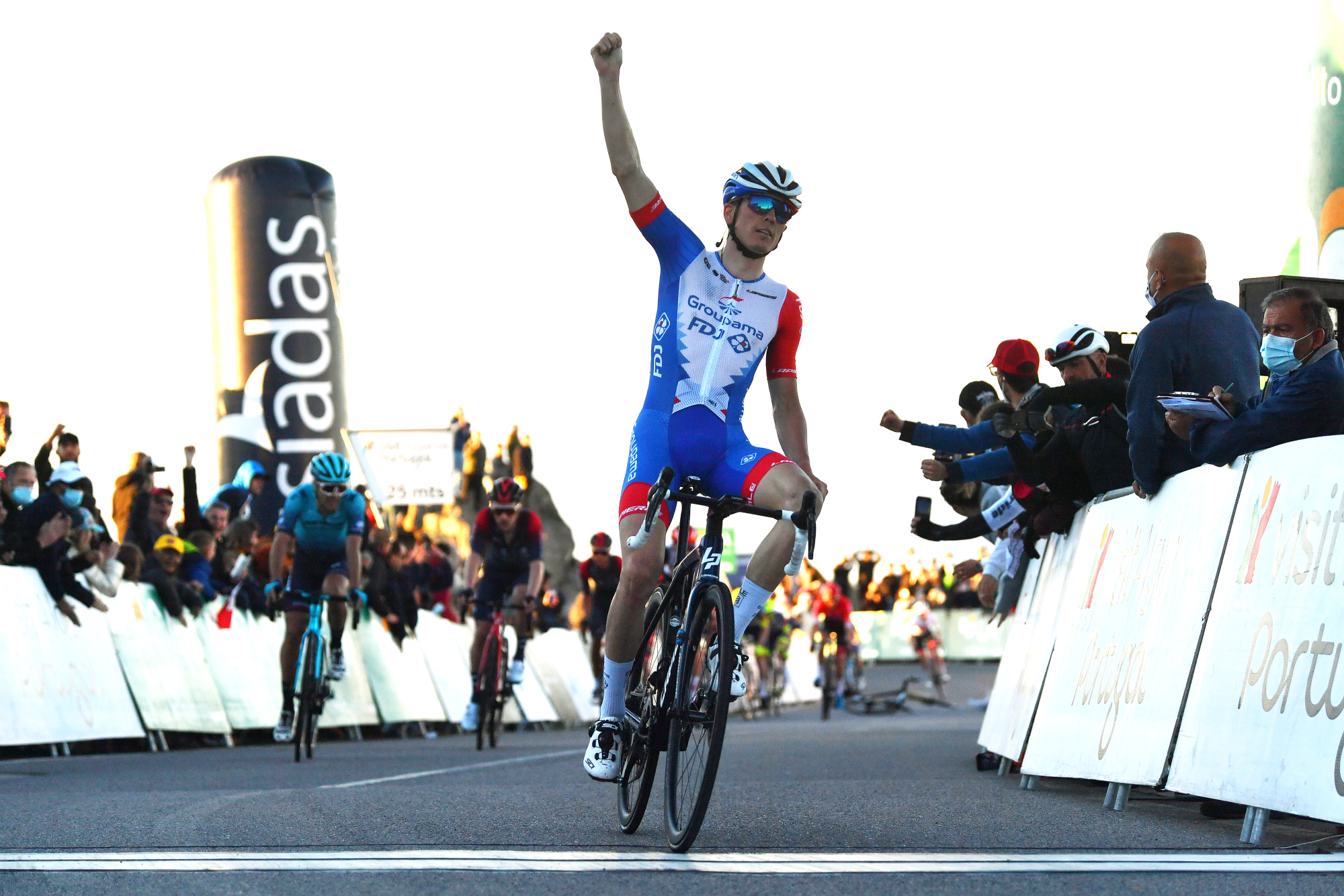
If the Dauphine is at all a harbinger of Tour success, then it's no surprise that French hopes are usually high here. At least at the start of the race. A whiff of form from one of its charges is rapidly distilled into an alluring scent ready to be bottled and used liberally during July. But hope can turn sour quickly.
Thibaut Pinot (Groupama-FDJ) finished second here in 2020 but limped to a 29th place finish at the Tour. Romain Bardet did finish second in 2016 and followed it up with another runner-up spot in Paris the following month but if anything the Dauphine now merely reflects the likelihood of French disappointment in July. Last year David Gaudu (Groupama-FDJ) finished 9th here and 11th in the Tour. A ninth place is nothing to be sniffed at, but when you’re looking to extinguish a Tour de France drought that extends back to Bernard Hinault in ‘85 hope needs to come in the form of a deluge, not a few drops.
It will likely be down to Gaudu again this year to get the French pulses racing. Pinot, who has had to carry the burden of expectation throughout his career, has chosen to skip this year’s race and will instead prepare for July at the Tour de Suisse. You can hardly blame him. He ended his own drought at the Tour of the Alps in April, winning for the first time in 1,007 days. A similar performance this week, again on home soil, would likely send the nation into hysteria, creating an unnecessary impediment on his road to the Tour. Bardet too will miss the race after leaving the Giro early though illness.
As a climber, Gaudu will have plenty of stages to target. Whether he can bag a victory remains to be seen but, on paper at least, it looks as though he’ll have at least five opportunities to stretch his legs on both hilly and mountainous terrain. His third place at the recent Mercan'Tour Classic Alpes-Maritimes, which featured almost 5,000 metres of climbing, points to good form. Likewise Warren Barguil (Arkéa Samsic) will look to show himself when the road points up and has shown plenty of consistency this year already including a couple of wins. Laporte too, as previously mentioned, could give the home fans something to cheer about.
Those early stages, when breaks may be allowed to go, may also present a chance for a few lesser names from a number of countries to announce themselves on the WorldTour stage. The past two editions of the Dauphiné featured stage wins from Lennard Kämna (Bora-Hansgrohe), Brent Van Moer (Lotto-Soudal), and Mark Padun (EF Education-EasyPost), who won both Alpine stages last year.
So who might come to prominence in this 2022 edition? Uno-X’s Tobias Johannessen has already won this year at the Etoile de Bessèges in February and should be well-suited to the lumps and the bumps of the Dauphiné. Likewise UAE’s Ayuso should excel in this terrain. It’s seemingly a case of if not when the 19-year-old will achieve his maiden WorldTour win. Why not this week?

Thank you for reading 20 articles this month* Join now for unlimited access
Enjoy your first month for just £1 / $1 / €1
*Read 5 free articles per month without a subscription

Join now for unlimited access
Try first month for just £1 / $1 / €1
Luke Friend has worked as a writer, editor and copywriter for twenty five years. Across books, magazines and websites, he's covered a broad range of topics for a range of clients including Major League Baseball, the National Trust and the NHS. He has an MA in Professional Writing from Falmouth University and is a qualified bicycle mechanic. He has been a cycling enthusiast from an early age, partly due to watching the Tour de France on TV. He's a keen follower of bike racing to this day as well as a regular road and gravel rider.
-
 Gear up for your best summer of riding – Balfe's Bikes has up to 54% off Bontrager shoes, helmets, lights and much more
Gear up for your best summer of riding – Balfe's Bikes has up to 54% off Bontrager shoes, helmets, lights and much moreSupported It's not just Bontrager, Balfe's has a huge selection of discounted kit from the best cycling brands including Trek, Specialized, Giant and Castelli all with big reductions
By Paul Brett
-
 7-Eleven returns to the peloton for one day only at Liège-Bastogne-Liège
7-Eleven returns to the peloton for one day only at Liège-Bastogne-LiègeUno-X Mobility to rebrand as 7-Eleven for Sunday's Monument to pay tribute to iconic American team from the 1980s
By Tom Thewlis